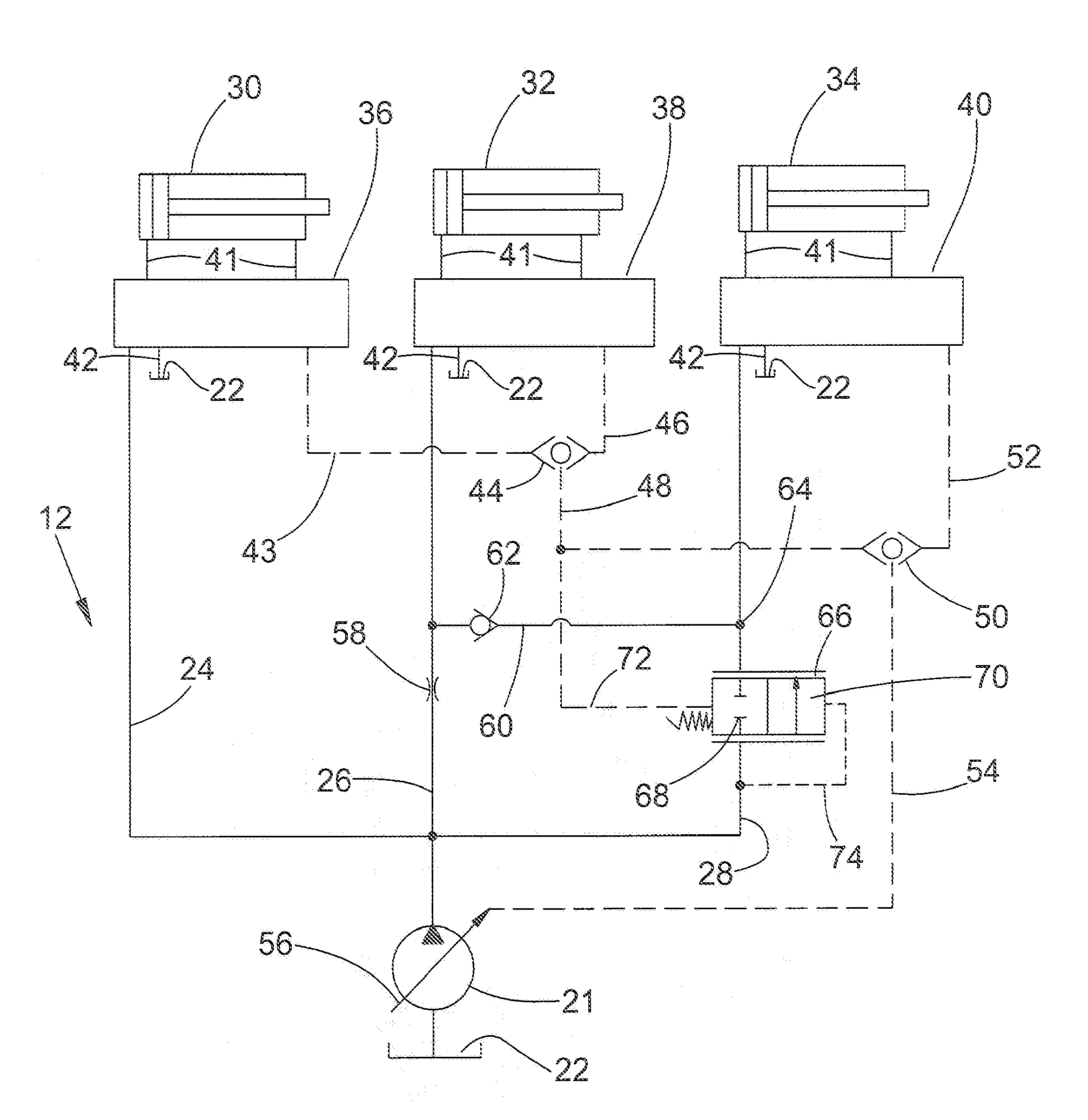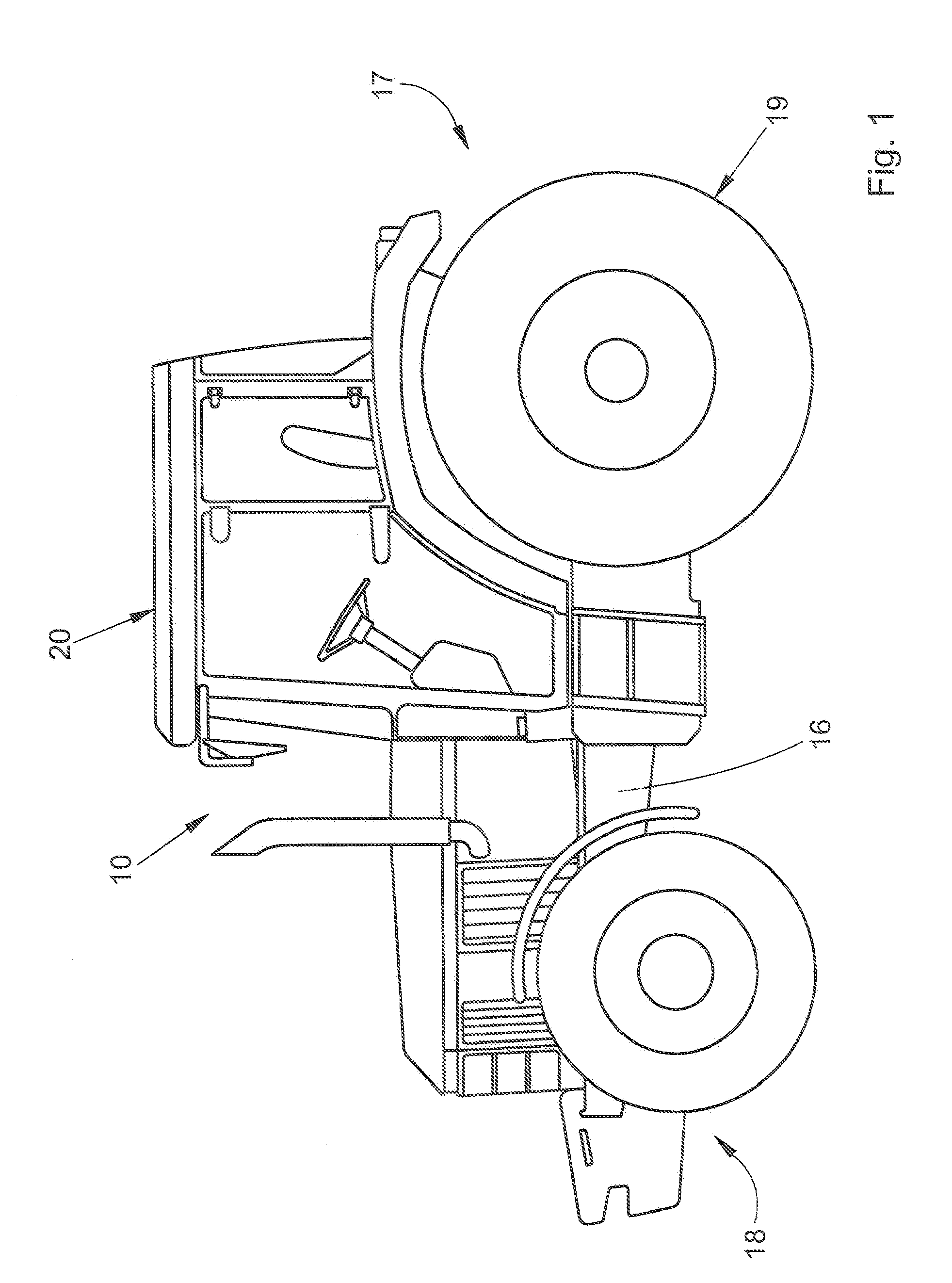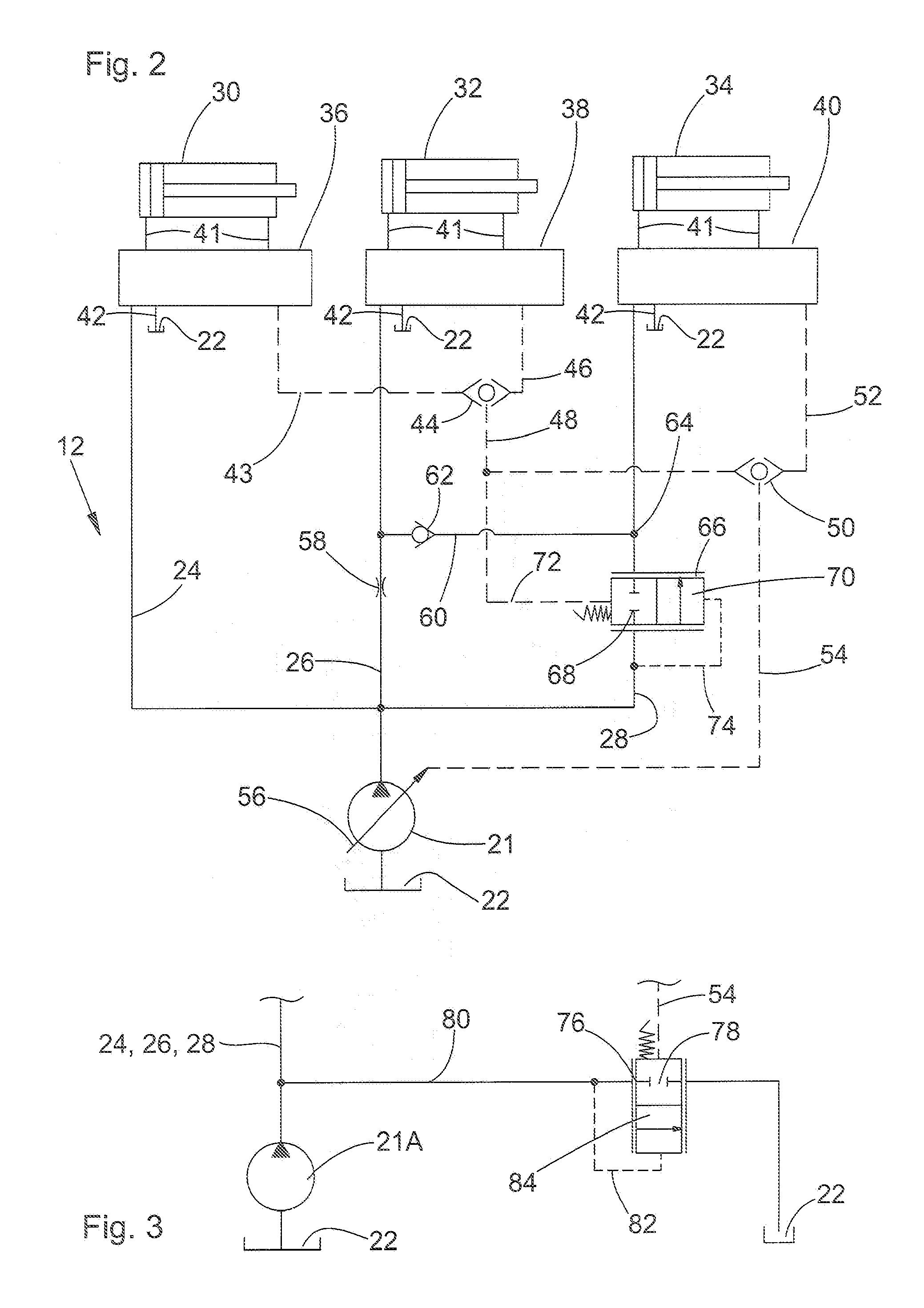Hydraulic Circuit
a technology of hydraulic circuits and actuators, applied in fluid couplings, clutches, servomotors, etc., can solve problems such as affecting the performance of the combined actuator, and the flow supply of one combined actuator is inadequa
- Summary
- Abstract
- Description
- Claims
- Application Information
AI Technical Summary
Benefits of technology
Problems solved by technology
Method used
Image
Examples
Embodiment Construction
[0020]FIG. 1 shows an agricultural vehicle 10 in the form of a tractor, which includes the hydraulic circuit 12 as shown in FIGS. 2 and 3. The hydraulic circuits shown in FIGS. 2 and 3 are described merely by way of example in connection with a tractor and may also be similarly used in other agricultural vehicles, such as harvesters, agricultural chemical applicators, planting and sowing machines, and also in construction and forestry machines.
[0021]The vehicle 10 includes a frame 16, on which, for example on a rear area 17, a three-point hitch (not shown) with lifting gear for the operation of attachments or implements (not shown) is arranged. A three-point hitch may similarly also be arranged on a front area of the vehicle 10. A plurality of hydraulic actuators are mounted on the vehicle 10, including a lift cylinder which is part of the three-point hitch. The lift cylinder is supplied with hydraulic fluid from a hydraulic circuit 12 shown in FIGS. 2 and 3. The hydraulic circuit 1...
PUM
 Login to View More
Login to View More Abstract
Description
Claims
Application Information
 Login to View More
Login to View More - R&D
- Intellectual Property
- Life Sciences
- Materials
- Tech Scout
- Unparalleled Data Quality
- Higher Quality Content
- 60% Fewer Hallucinations
Browse by: Latest US Patents, China's latest patents, Technical Efficacy Thesaurus, Application Domain, Technology Topic, Popular Technical Reports.
© 2025 PatSnap. All rights reserved.Legal|Privacy policy|Modern Slavery Act Transparency Statement|Sitemap|About US| Contact US: help@patsnap.com



